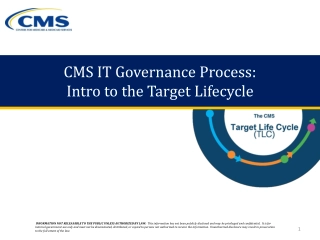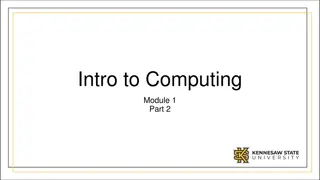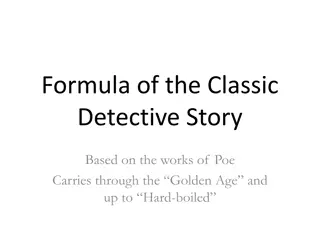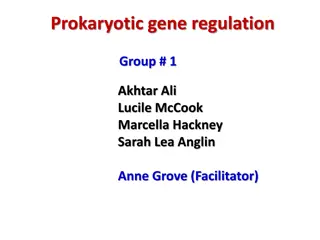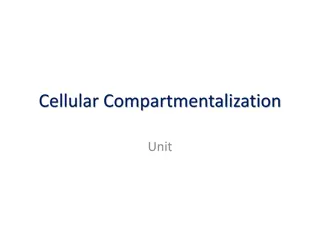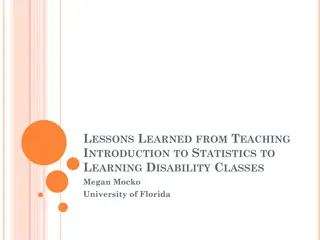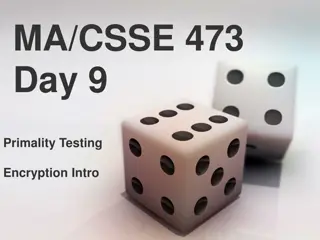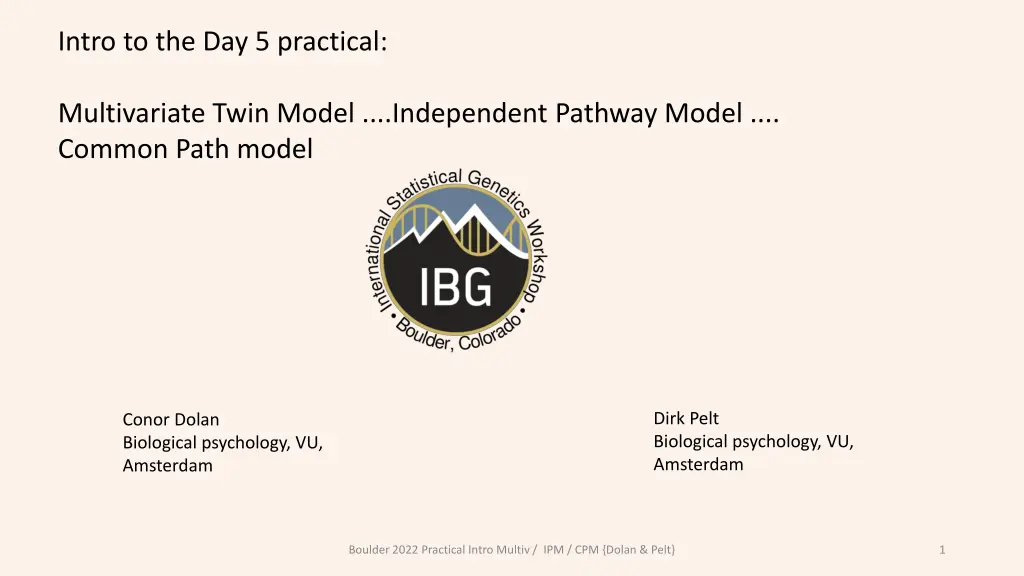
Intro to Multivariate Twin Model & Pathway Analysis
Explore the practical application of Multivariate Twin Model, Independent Pathway Model, and Common Path Model in Biological Psychology. This practical covers the decomposition of phenotypic variance, covariance, and bivariate ADE models. Understand the intricate relationships between biceps and triceps in the context of twin studies. Delve into the variance components and path coefficients to unravel the complexities of genetic influences.
Download Presentation

Please find below an Image/Link to download the presentation.
The content on the website is provided AS IS for your information and personal use only. It may not be sold, licensed, or shared on other websites without obtaining consent from the author. If you encounter any issues during the download, it is possible that the publisher has removed the file from their server.
You are allowed to download the files provided on this website for personal or commercial use, subject to the condition that they are used lawfully. All files are the property of their respective owners.
The content on the website is provided AS IS for your information and personal use only. It may not be sold, licensed, or shared on other websites without obtaining consent from the author.
E N D
Presentation Transcript
Intro to the Day 5 practical: Multivariate Twin Model ....Independent Pathway Model .... Common Path model Dirk Pelt Biological psychology, VU, Amsterdam Conor Dolan Biological psychology, VU, Amsterdam Boulder 2022 Practical Intro Multiv / IPM / CPM {Dolan & Pelt} 1
UNIVARIATE TWIN MODEL ...biceps skinfold .... ADE model rmz> 2*rdz(path diagram of the DZ group) DZ twin 2 DZ twin 1 The twin design is a means to decompose phenotypic variance (ADE model): bic2= Ab2+ Db2+ Eb2 Boulder 2022 Practical Intro Multiv / IPM / CPM {Dolan & Pelt} 2
Univariate model (question? answer?): decomposition of phenotypic variance bic2= Ab2+ Db2+ Eb2 Bivariate model (question? answer?): decomposition of phenotypic variances ( bic2 tri2) and covariance ( bic,tri) Ph bic Bivariate model for biceps and triceps: bic bic2 bic,tri tri DbDt AbAt bic,tri tri2 EbEt Db Eb Dt Et Ab At tri Db2 Ab2 Dt2 Eb2 At2 Et2 bivariate ADE model: Ph= A+ D+ E 1 1 1 1 1 1 biceps triceps Boulder 2022 Practical Intro Multiv / IPM / CPM {Dolan & Pelt} 3
Ph= A+ D+ E variances in red; covariance in blue Ph bic bic bic2 bic,tri tri = bic,tri tri2 tri A bic D bic E bic bic Ab2 Ab,At tri bic Db2 Db,Dt tri bic Eb2 Eb,Et tri + + Ab,At At2 Db,Dt Dt2 Eb,Et Et2 tri = tri tri Ph bic bic tri Ab2+ Db2+ Eb2 Ab,At+ Db,Dt+ Eb,Et Ab,At+ Db,Dt+ Eb,Et At2+ Dt2+ Et2 tri Boulder 2022 Practical Intro Multiv / IPM / CPM {Dolan & Pelt} 4
Bivariate ADE path diagram for twin data. DZ: RA= RD=. MZ: RA=1 RD=1 PhMZ A+ D+ E A+ D A+ D A+ D+ E PhDZ A+ D+ E A+ D A+ D A+ D+ E Ph (2 x 2) Covariance Matrix - 2 phenotypes PhMZ (4 x 4) Covariance Matrix - 2 phenotypes X 2 twins PhDZ (4 x 4) Covariance Matrix - 2 phenotypes X 2 twins Boulder 2022 Practical Intro Multiv / IPM / CPM {Dolan & Pelt} 5
variance components (used to fit) vs. path coefficients (used to show) DbDt AbAt EbEt DbDt AbAt EbEt Db Eb Dt Et Ab At Db Eb Dt Et Ab At Db2 Ab2 Dt2 Eb2 At2 Et2 1 1 1 1 1 1 1 db 1 1 dt ab 1 at 1 eb 1 et biceps triceps biceps triceps A biceps Ab2 Ab,At triceps Ab,At At2 A biceps triceps biceps ab* AbAt*at at2 ab2 biceps triceps ab* AbAt*at triceps Standard deviations: aband atand correlation: AbAt covariance (A): ab* AbAt*at covariance (A): AbAt Boulder 2022 Practical Intro Multiv / IPM / CPM {Dolan & Pelt} 6
variance components (used to fit) vs. path coefficients (used to show) DbDt DbDt AbAt EbEt AbAt tracing .... EbEt tracing - - - Db Eb Dt Et Ab At Db Eb Dt Et Ab At Db2 Ab2 Dt2 At2 Eb2 1 Et2 1 1 1 1 1 db dt ab 1 1 at 1 1 eb et 1 1 biceps triceps biceps triceps trace up from bicepts to Ab(ab) trace from Abto At(correlation : AbAt) trace down from Atto triceps (at) ..... Additive genetic contribution to covariance: ab* AbA*at trace up from bicepts to Ab(1) trace from Abto At(covariance : AbAt) trace down from Atto triceps (1) ..... Additive genetic contribution to covariance: 1* AbAt*1 Boulder 2022 Practical Intro Multiv / IPM / CPM {Dolan & Pelt} 7
The generalization from p=1 (univariate) to p=2 (bivariate) to p=4 (4 The generalization from p=1 (univariate) to p=2 (bivariate) to p=4 (4- -variate). variate). PhMZ A+ D+ E A+ D A+ D A+ D+ E PhDZ A+ D+ E A+ D A+ D A+ D+ E Biceps and Triceps (purple ), Subscapular (blue ), Suprailiacal (orange ). Boulder 2022 Practical Intro Multiv / IPM / CPM {Dolan & Pelt} 8
A orange; D green; E blue Ph(4 x 4) Covariance Matrix - 4 phenotypes PhMZ, PhDZ(8 x 8) Covariance Matrix - 4 phenotypes X 2 twins Boulder 2022 Practical Intro Multiv / IPM / CPM {Dolan & Pelt} 9
Ph=A+ D+ E Each symmetric matrix has p*(p+1)/2 = 4*5/2 = 10 elements, i.e., 4 variances, 6 Each symmetric matrix has p*(p+1)/2 = 4*5/2 = 10 elements, i.e., 4 variances, 6 covariances covariances (counting (counting covariances covariances once!) once!) A model for the phenotypic 2p x 2p DZ phenotypic covariance matrix PhDZ A+ D+ E A+ D A+ D A+ D+ E The pxp covariance matrices themselves A, D,& Ecan be modelled "A model (for A D E) in a model (for PhMZ PhDZ)" Boulder 2022 Practical Intro Multiv / IPM / CPM {Dolan & Pelt} 10
Ais part of model Ph Single common factor model - a possible model for A Genetic theory of the common factor model 1) there are genes with common additive genetic effects on all 4 skinfold phenotypes (pleiotropic genes) Ac 2) there are genes with phenotype specific additive genetic effects - unique influences on the 4 phenotype are a source of variance, but not covariance biceps supri triceps subsc A tri A A s A si bic Subscript c in Acstands for common because Acgenes are common to the 4 phenotypes (Acgenes are pleiotropic) Boulder 2022 Practical Intro Multiv / IPM / CPM {Dolan & Pelt} 11
The 4x4 covariance matrices A, D,& E, each a common factor model Neuroticism items data A has 4*5/2 = 10 elements, but modelled using 8 parameters A= LALAt+ TA LA(4x1) with 4 factor loadings (path coefficients) TA(diagonal 4x4) with 4 residual variances Boulder 2022 Practical Intro Multiv / IPM / CPM {Dolan & Pelt} 12
The independent pathway model Ac Ec Dc n3 n4 n1 n2 D3 E3 D2 A3 D4 E4 A4 A1 D1 E1 A2 E2 Practical: applied to 4 neuroticism items (n1, n2, n3, n4) Boulder 2022 Practical Intro Multiv / IPM / CPM {Dolan & Pelt} 13
Psychometrics: the statistical science of measuring latent phenotypes A proxy: Neu scorei= n1i+ n2i+ n3i+ n4i What we really want: A statement about the latent variable neuroticism What we get: A statement about the proxy of the latent variable neuroticism E E D A D A 0 d2 a2 .612 .378 e2 neuroticism neu score Boulder 2022 Practical Intro Multiv / IPM / CPM {Dolan & Pelt} 14
The common pathway model A, D (C), E decomposition of latent variable E D A what we want Neuroticism The common factor model ... a measurement model relates items to latent variable n2 n3 n1 n4 4 3 1 2 common factor model (applied to items) Boulder 2022 Practical Intro Multiv / IPM / CPM {Dolan & Pelt} 15
E2 A2 D2 A2 D2 E2 A E D ipm d2 E D A ipm ipm a4 a3 d4 1 e4 1 e2 d3 a2 1 e3 1 1 1 Neuroticism n2 n3 n4 n1 f4 1 f2 f3 A 3 A 4 A 2 A 1 D 3 D 4 D 2 D 1 n2 n3 n1 n4 E 3 E 4 E 2 E 1 A 3 A 4 A 2 A 1 D 3 D 4 D 2 D 1 E 3 E 4 E 2 E 1 4+4+4 + 4+4+4 = 24 parameters 3+3+4+4+4 = 18 parameters Boulder 2022 Practical Intro Multiv / IPM / CPM {Dolan & Pelt} 16
Practical Part 1: 4-variate model fitted to the skinfold data ADE model Practical Part 2: 4-variate models fitted to the 4 neuroticism items ADE vs AE model AE Independent Pathway model AE Common Pathway model cut & paste, & answer the questions. Boulder 2022 Practical Intro Multiv / IPM / CPM {Dolan & Pelt} 17
Boulder 2022 Practical Intro Multiv / IPM / CPM {Dolan & Pelt} 18
Wrap-up of the practical: Multivariate Twin Model ....Independent Pathway Model .... Common Path model Keep your eye on the substantive hypotheses IPM pleiotropy what is the story? Boulder 2022 Practical Intro Multiv / IPM / CPM {Dolan & Pelt} 19
Keep your eye on the substantive hypotheses CPM Psychometric interpretation latent phenotype as measured by items ... a strong motivation for CPM ... but a fairly parsimonious ideal phenotype latent variable of interest Phenotypes: items depend directly and causally on the latent variable N Measurement Error (acts like E) Also: CPM is a mediation model: N mediates effects of A and E on the items n1 n2 n3 & n4. Boulder 2022 Practical Intro Multiv / IPM / CPM {Dolan & Pelt} 20
What we found out about skinfold measures 1) the skinfold measures are highly correlated phenotypically 2) Model is a ADE model 3) A + D make a large contribution to the phenotypic variances 4) The A, D and E correlations are all large. 5) The D correlations are equal to 1 (dominance effects 100% common to all measures) Boulder 2022 Practical Intro Multiv / IPM / CPM {Dolan & Pelt} 21
What we found out about neuroticism items 1) Model is an AE model (no C & no D) 2) The IPM fitted OK 3) The CPM fitted well, as we expect based on psychometric theory (why did it fit well?) 4) The narrow-sense heritability of the latent variable neuroticism is .465 5) The narrow-sense heritability of the neuroticism proxy (sumscore) is .378 6) The factor loading are between .64 and .77. 6) The item specific residuals are mainly due to E (item specific A variance is low) Boulder 2022 Practical Intro Multiv / IPM / CPM {Dolan & Pelt} 22
Boulder 2022 Practical Intro Multiv / IPM / CPM {Dolan & Pelt} 23
A1A2 = .98 D1D2 E1E2 D1 E1 D2 E2 A1 A2 1 1 1 1 1 1 D22 D12 A22 A12 E22 E12 Ph1 Ph2 cov(Ph1, Ph2) = A1 A1A2 A2+ D1 D1D2 D2+ E1 E1E2 E2 Given A1A2 = .98, does that mean that A is contributing greatly to cov(Ph1, Ph2)? cov(Ph1, Ph2) = A1*.98* A2+ D1 D1D2 D2+ E1 E1E2 E2 Boulder 2022 Practical Intro Multiv / IPM / CPM {Dolan & Pelt} 24
C1C2 A1A2 E1E2 C1 E1 C2 E2 A1 A2 1 1 1 1 1 1 C12= .03 A12 C22 A22 E22 E12 Ph1 Ph2 cov(Ph1, Ph2) = A1 A1A2 A2+ C1 C1C2 C2+ E1 E1E2 E2 Given C1 is very small (standardized: .03), why is it hard to estimate C1C2reliably? cov(Ph1, Ph2) = A1 A1A2 A2+ .03* C1C2*.35 + E1 E1E2 E2 Boulder 2022 Practical Intro Multiv / IPM / CPM {Dolan & Pelt} 25
Suppose ADE model, A2>0, D2>0 and E2>0, and suppose sample size is very large (power not an issue) Can phenotype item n4 be characterized by an AE model in the CPM? Can phenotype item n4 be characterized by an AE model in the IPM? Boulder 2022 Practical Intro Multiv / IPM / CPM {Dolan & Pelt} 26
Boulder 2022 Practical Intro Multiv / IPM / CPM {Dolan & Pelt} 27
RCR Boulder 2022 Practical Intro Multiv / IPM / CPM {Dolan & Pelt} 28
RCR Case 1: Phenotype: criminal behavior (e.g., an objective measure using police contact: misdemeanors, felonies, convictions) Reseach question2: do genetic factors contribute to individual differences in criminal behavior? do environmental factors contribute to individual differences in criminal behavior? Question: Does this have any bearing on responsibility / culpability? Should it be of interest to a judge or an attorney? GHB 2021 lecture 7 29
RCR Case 2: Phenotype: victim of a crime e.g., have you ever been a victim of a mugging? Measured yes (1) or no (2), with underlying liability Proposition: heritability of phenotype h2> 0 Q: Is h2>0 plausible? what does this mean? Q: if true, how would culpability fit in? Are you in part to blame if you are mugged? Should it be interest to a judge or an attorney? GHB 2021 lecture 7 30

